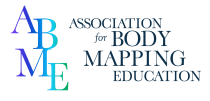Musicians & movement
Every sound we make we make by moving. After all, sound IS movement, vibration. Musicians make movements to play their instrument and we call this “technique”. To know how to move my best then is to know how to play my best. It’s elementary. And yet I think we still often overlook the significance of movement on the quality of the sound we produce, from what I see and hear of other musicians and music teaching.
It’s understandable. Not many of us have a musical training that put movement on a par with sound. You can see the beginnings of addressing this situation with classes in movement techniques now being offered at tertiary music institutions, even if only as an elective subject. But what of the teaching studio where the nuts and bolts and bulk of instrumental training is happening?
I’m lucky enough to have a music background that has included some wonderful teachers and prestigious institutions where I was being trained to move for a living (yes, that’s what we do as musicians!) – it’s just that nobody, myself included, thought of it that way. For the last 26 years I have explored movement through Alexander Technique, trained to be a practitioner of AT and more recently, studied Body Mapping for Musicians with Andover Educators. I want to use my experience as a musician and my knowledge of movement principles to encourage other musicians to expand their playing and teaching parameters just a little to include movement. The benefits are too good to miss!
You don’t need to become a fully fledged movement teacher to inspire your students in this way nor does it have to take more than a fresh eye and a few moments in any lesson to begin to integrate movement into your teaching style. Accessible, succinct and above all practical information about the body in movement will be all you need.
With this blog I hope to present some ideas for how to begin, some help in mapping out the anatomy of music making and provide a sounding board for your observations. The music teachers I’ve known have all been highly creative people and so I’m keen to hear how you think you might use the information with your own playing and your students. My best outcome would be a community of studio companions sharing artistry and expertise.
